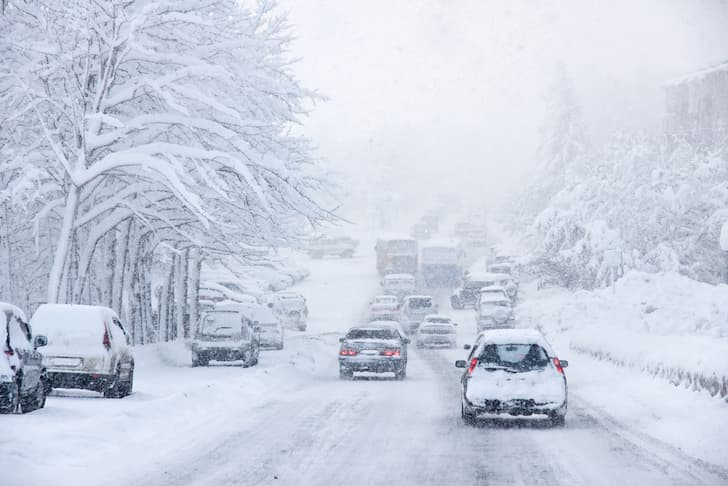California is grappling with an unprecedented weather event, as a powerful blizzard sweeps through the Golden State and the Mountain West, leaving a trail of heavy snowfall and winds reaching an astonishing 190 mph. The National Weather Service has issued a “life-threatening concern” for residents near Lake Tahoe, emphasizing the extreme nature of this ongoing blizzard, which has now entered its third day.
The impact of the blizzard has led to the closure of hundreds of miles of California highways, including over 100 miles of I-80 from the Nevada border to Colfax, with no estimated time for reopening. Travelers have found themselves trapped in their vehicles for hours, and over 300 vehicles are stranded. The storm has not only disrupted transportation but also left more than 7,800 homes and businesses without power in California, highlighting the severity of the situation.
In the northern Sierra Nevada, where moderate to heavy snow has persisted overnight, blizzard conditions are exacerbating the challenges faced by residents and authorities. A blizzard warning remains in effect for areas above 6,500 feet, with lower elevations under a winter storm warning. The Weather Prediction Center forecasts up to 12 feet of snow along the Sierra by late Sunday, presenting an unprecedented scenario for the region.
The California Highway Patrol advises residents to stay home, stay warm, and avoid putting themselves and their families in dangerous situations. In Truckee, California, the CHP emphasizes the necessity of tire chains for motorists traveling through the mountains, where more than 7 feet of snow fell over the weekend.
Ski resorts, typically enthusiastic about major snowstorms, are facing challenges as well. Many resorts were forced to shut down on Friday due to the extreme conditions, with hopes of reopening on Sunday. The Palisades Tahoe resort recorded a wind gust of 190 mph, underlining the intensity of the storm. Ski resorts, including Mammoth Mountain Ski Area, are dealing with high avalanche danger, making it difficult for ski patrol to conduct necessary avalanche mitigation.
As the blizzard continues, residents are urged to exercise caution, especially in the backcountry where avalanche danger is expected to persist. The Mammoth Mountain Ski Area, for instance, remained closed on Sunday due to winds of up to 70 mph, hampering avalanche mitigation efforts. Over three feet of snow fell in the area over three days, with more expected.
In the midst of this extreme weather event, the blizzard has also brought rare back-to-back tornadoes to Central California. Moisture from a winter storm facilitated the occurrence of two tornadoes, one of which damaged an elementary school in Madera County. While tornadoes are uncommon in California, this event underscores the unpredictable nature of the current weather patterns.
Meteorologist William Churchill from the National Weather Service describes this storm as an “extreme blizzard for the Sierra Nevada” and other affected regions, extending into Nevada, Utah, and portions of western Colorado. Despite the severity of the storm, Churchill does not anticipate it breaking records, but the sheer scale of the disruption and the rare occurrence of tornadoes in Central California highlight the extraordinary nature of this weather event.
California is grappling with a historic blizzard, disrupting transportation, causing power outages, and presenting challenges to ski resorts. The extreme weather conditions have prompted authorities to issue warnings and advisories, urging residents to prioritize safety. As the blizzard continues to unfold, the resilience of Californians and their ability to navigate these challenging conditions will be put to the test.











